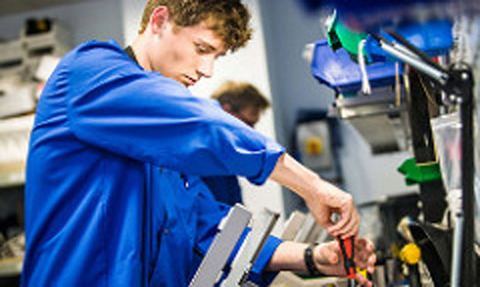IET unveils apprenticeship and Forces awards shortlist
2 Oct 2017

An army sergeant whose innovative airplane runway achieved cost savings of 80% and an apprentice who helped halve welding time at her firm are among the finalists for this year’s Institution of Engineering and Technology awards.
Three individuals have been announced for both the annual Armed Forces Technician of the Year and Apprentice of the Year awards.
Their achievements cover nuclear facility decommissioning, automotive electron beam welding and electron-microscopy production, supporting the UK response to the Nepal earthquakes and improving cyber security for the RAF’s aircraft systems.
Among the trio of armed forces technicians is Royal Engineers staff sergeant John Martindale’s solution for the construction of a 1.7km long natural surface runway at an RAF airfield in Suffolk which reduced costs to 20%.
He is up against Corporal Philip Matthews – responsible for building a new system for the MOD that protects aircraft systems against malicious cyber threats – and fellow Royal Engineer Warrant Officer Class 2 Ram Kumar Rai.
WO2 Rai was deployed as technical lead for the humanitarian and disaster relief operation following the 2015 earthquakes in Nepal where he developed an innovative shelter design based on the materials supplied in aid packs. He was also involved in an earthquake resistant home design.
Apprentice of the Year finalists include Magdalena Dyga, who recently completed a specialist science apprenticeship at Rolls-Royce plc, where she was the single point of contact for the facility’s automated welding process.
She was a key member of the team that achieved a 50% time reduction in electron beam welding. Boasting annual savings of at least £160,000, the project went on to win the company’s Lean Award.
Also competing is Sellafield electrical engineer Andrew Heaton who is involved in decommissioning and clean-up of legacy nuclear facilities. He also contributed to the design of a new robotic manipulator system that can reduce and remove risk to human operators in high-hazard areas.
The third contestant, Wesley Washington, is a fourth-year mechanical engineering apprentice at Carl Zeiss Microscopy GmbH. Through his hands-on role in defining standard work instructions for the electron-microscopy build process during the transfer of production from Germany to the UK, he provided support and training for new production staff that contributed to €2.5m annual cost savings for the business.
Announcing the shortlists, IET President professor Jeremy Watson commented: “All the IET Apprentice and Technician Award finalists demonstrated skills and knowledge through their work that went far beyond their roles. They have taken on challenging tasks and through innovation and determination have brought real benefits to their companies and areas of operation.
“They are being recognised by the IET for their achievements and for being role models to future generations of technicians and engineers by inspiring them to develop their own careers and success stories.”
The winners of both awards will be announced at the IET Achievement Awards ceremony in London on Wednesday 15 November. They will each receive a prize consisting of a trophy, certificate, £1,000 cash and two years’ free IET membership.
The awards are part of the IET’s Achievement Awards and Scholarships programme which this year provided over £1 million in awards, prizes and scholarships.

